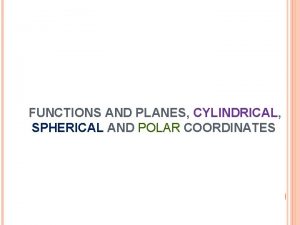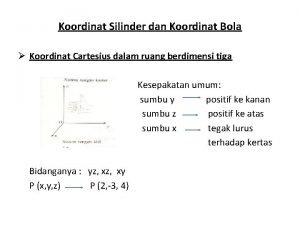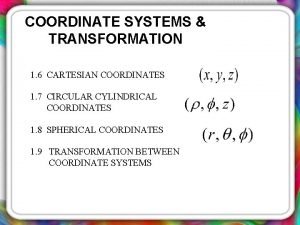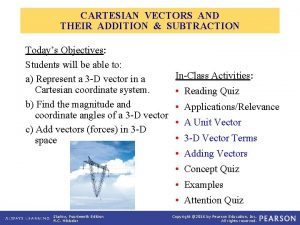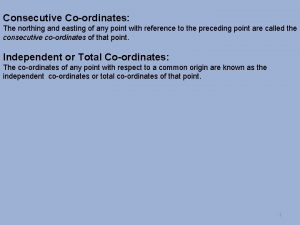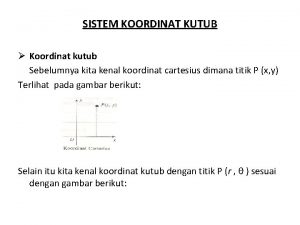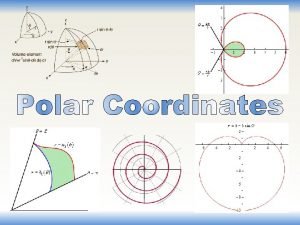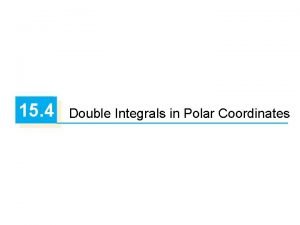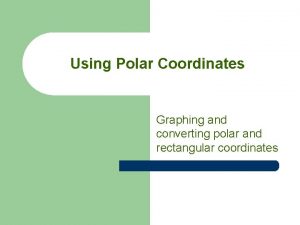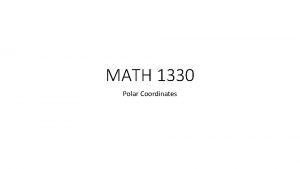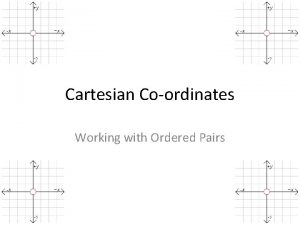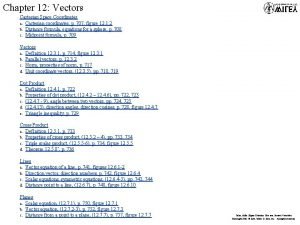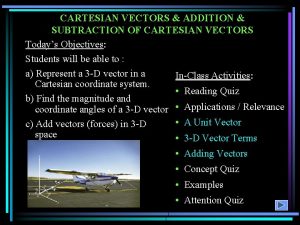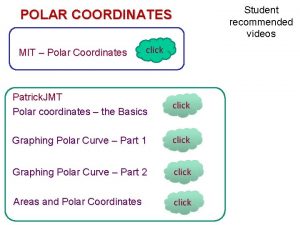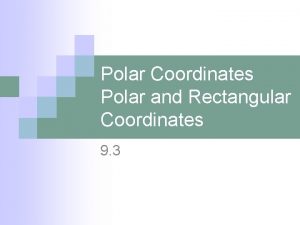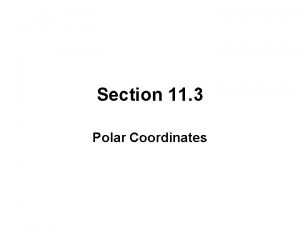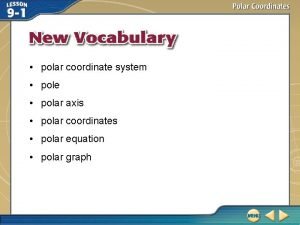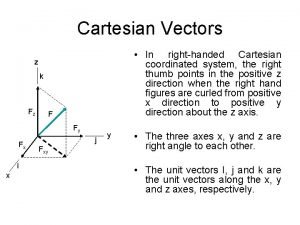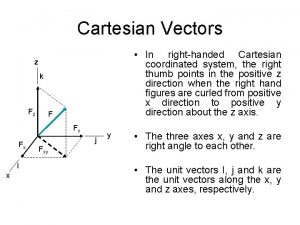Vectors Cartesian vs Polar Coordinates Cartesian points x













- Slides: 13

Vectors

Cartesian vs. Polar Coordinates • • Cartesian points (x, y) are measured in how far along (X) and how far up (Y) a point is. Converting from cartesian to polar • to R uses Pythagorean theorem • • r= sqrt(x 2 + y 2) to theta uses tangent function • Tan(theta)= y/x • Polar coordinates (r, theta) are measured by how far away (r) and at what angle (theta) a point is. • Converting from polar to cartesian: • • to X uses cosine function x=rcos(theta) to Y uses sine function y=rsin(theta) Quadrant Value tan-1 I Calculator Value II Add 180* IV Add 360*


Practice Convert between cartesian and polar coordinates: (13, 22. 6*) (6, 3)

Vectors • Vectors represent a magnitude & direction • Vector quantities: displacement, velocity, acceleration, & force • Free Body Diagrams • • • Scale Arrow with head (point) & tail Magnitude & direction are clearly labeled

Vector Direction & Magnitude • Described by the angle of rotation of the vector tail from: E, N, W, or S. • Can be described as 40* North of East • The vector pointing east has been rotated 40* toward the northerly direction • Can be described as 40* C-C from East • The vector is described as an angle value counter-clockwise (up to 359*) from due east • Magnitude in a scaled diagram is depicted by the length of the arrow.

Vector Addition • Simple Addition for vectors pointing in the same or opposite directions • When vectors are point in non-vertical/horizontal orientation • Calculating displacement using Pythagorean theorem, head to tail method, & parallelograms

Resultant • The resultant (R) represents a displacement equal to that of a scaled vector diagram

Practice What is the magnitude and direction of the resultant vector? 9 6 12

Activity: String Writing Your group must write the complete FIRST NAME of every person in the group on a standard piece of paper. However, nobody may touch the pen! You must attach the strings to the pen and write your names by pulling on the strings. Materials: • 4 strings • Blank sheet of paper taped to desk • Ink Pen

Requirements Keep at least 8 inches from pen at all times. Each person can only use 1 string The paper cannot be moved, tape it down to the desk. Must write complete first names of each student in the group

Reflection Questions 1. What was challenging about this activity? 2. What were some ways that you group worked to overcome these challenges? 3. What were the forces that your group worked with?

Practice • ADD EM UP!
 Cho hang
Cho hang Converting polar coordinates to rectangular coordinates
Converting polar coordinates to rectangular coordinates Cylindrical coordinates grapher
Cylindrical coordinates grapher Sistem koordinat bola
Sistem koordinat bola Area in spherical coordinates
Area in spherical coordinates Cartesian vectors statics
Cartesian vectors statics Azmeters
Azmeters Consecutive coordinates and independent coordinates
Consecutive coordinates and independent coordinates Contoh soal luas dalam koordinat kutub
Contoh soal luas dalam koordinat kutub What is cartesian form
What is cartesian form Type of conic
Type of conic Polar coordinate
Polar coordinate Double integral in polar coordinates
Double integral in polar coordinates How to graph polar equations on ti-84
How to graph polar equations on ti-84


